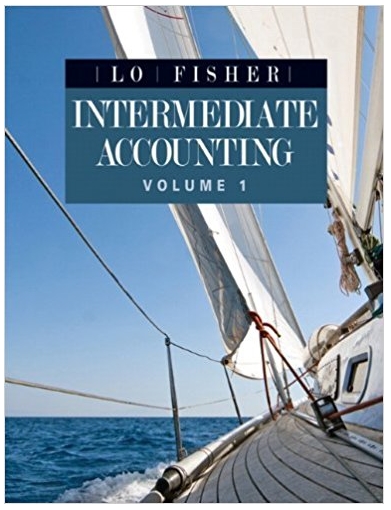1. Every so often, journalists writing business columns in newspapers and magazines provide interesting commentary on the...
Question:
2. For example, around the time of the article, it was common practice for companies to disclose “pro forma” financial results that excluded various items (usually expenses) that companies considered to be one-time occurrences and did not reflect their ongoing business. Ingram argued that, post-Enron, investors and regulators were "pushing companies to declare their ‘real’ earnings."
3. Another practice that was accepted at the time was to not account for the cost of stock options given to employees. These stock options allow employees to buy shares in their company’s stock at a fixed price, which could be substantially below the market price depending on the company’s performance. The focus on financial reporting issues post- Enron has increased the pressure for companies to record the cost of awarding these stock options to employees. As Ingram writes, such stock options are often used by start-up tech companies. If they were recorded, the cost of such options could amount to billions of dollars industry-wide. Alan Greenspan, the U.S. Federal Reserve chairman, argued that options replace cash compensation and should therefore be expensed.
4. The effect of expensing the cost of stock options could be substantial. The Federal Reserve estimates that the exclusion of stock option costs increases the annual growth rate in earnings by as much as 2.5%. Another study suggests that most companies it examined would have had their profits shaved by 20% to 30%. As an extreme case, it is estimated that Microsoft's $4.5 billion profit in 1998 would have turned to a loss of $17.8 billion had it purchased shares in the open market to pay the shares on the options owned by its employees.
5. While financial statements do include most of the data in the notes, news reports rarely report such information but rather focus on the headline numbers such as revenue and net income. If the information in the notes were suddenly included in the financial statements, the revised figures could be shocking to investors. The market reaction could be damaging when the economy is fragile and sensitive to bad news.
6. There were of course concerns more closely related to problems seen at Enron, which kept many debts off its balance sheet by using "special-purpose entities,” or SPEs.
Many other companies also use these SPEs, and their reputations could be tarnished as well. For example, a company may have sold its office building and transferred the related debt to an SPE to isolate the debt to decrease the risk of the operating company.
The company then leases the building back from the SPE. This kind of "synthetic lease” is legal, but frowned upon after the Enron bankruptcy, as Ingram writes.
7. While this information is disclosed in the fine print, suddenly incorporating significant debt into the financial statements could not only frighten investors but also cause a company's credit rating to be downgraded. The combination of lower profits and higher debt could put much downward pressure on stock, concludes Ingram.
Required:
Answer the following four questions by applying financial accounting theory and the IFRS Framework.
a. What are the pros and cons of the change in reporting described in paragraph 2?
b. Refer to paragraphs 3 and 4. Discuss whether the cost of employee stock options should be (i) not recorded as rules permitted at the time; (ii) expensed when the options are granted; or (iii) capitalized as an asset.
c. Discuss the conceptual merits of consolidating or excluding SPEs in companies’ financial statements (paragraphs 6 and 7).
d. Evaluate Ingram’s sentiments regarding the consequences of more disclosure.
Financial Statements
Financial statements are the standardized formats to present the financial information related to a business or an organization for its users. Financial statements contain the historical information as well as current period’s financial... Balance Sheet
Balance sheet is a statement of the financial position of a business that list all the assets, liabilities, and owner’s equity and shareholder’s equity at a particular point of time. A balance sheet is also called as a “statement of financial...
Fantastic news! We've Found the answer you've been seeking!
Step by Step Answer:
Related Book For 

Question Posted:





